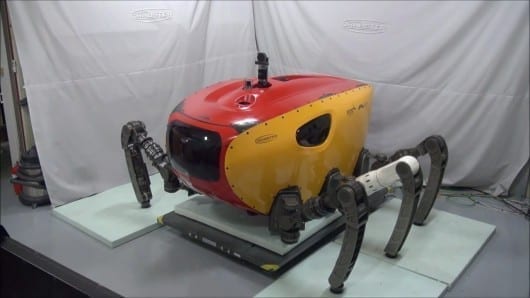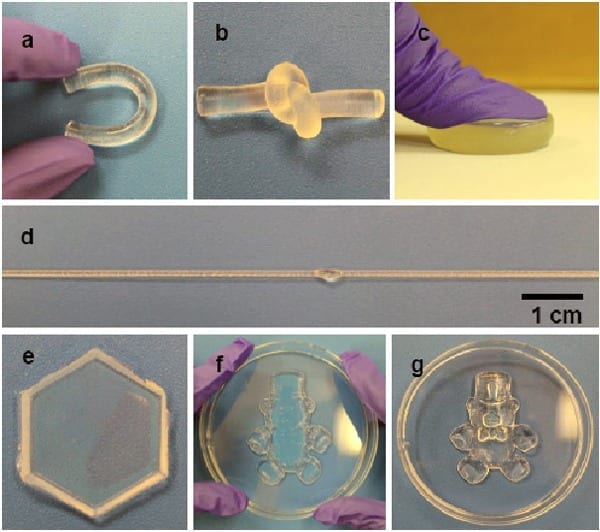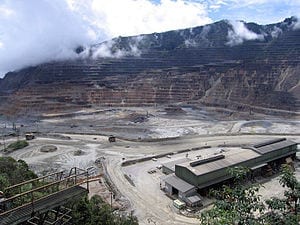
The Japanese spider crab is about to lose its title as the world’s largest crustacean thanks to a new robot, the Crabster, developed in South Korea.
For the past 2 years, researchers at the Korean Institute of Ocean Science and Technology (KIOST) have been working on a giant robot crab that is about the size and weight of a Smart car. This summer it will help scientists explore wrecks below the sea, weathering harsh tidal currents rushing over it at 1.5 m/s.
One of the key problems associated with traditional propeller-driven underwater remotely-operated vehicles (ROVs) and autonomous underwater vehicles (AUVs) is they don’t perform well in strong currents. Another problem is their propellers tend to kick up a lot of detritus, lowering operator visibility. To overcome these problems a team led by Principal Research Scientist Bong-huan Jun of KIOST designed a six-legged robot based on the characteristics of crabs and lobsters (hence the name).
The robot’s six legs contain a total of 30 powerful joints. Like its biological cousins, the robot’s two front legs are more articulated than the rest so they can be used as arms. Objects can be picked up and stored inside a frontal compartment to be brought to the surface. Even in shallow seas it can get pretty dark down there, so the Crabster is equipped with 10 optical cameras and a long-range scanning sonar which scans up to 200 m (650 ft) away.
The team used computer simulations to streamline the robot’s main shell so that it would actually stabilize the robot under the force of the currents. By shifting its posture with its six legs, the body shell effectively reduces drag and increases lifting force. It’s a bit like how real crabs stick out their arms to help steady themselves in fast-moving currents.
In about a month the Crabster and its control station will be transported by shipping container to waters off the coast of South Korea. There it will be lowered 200 meters by crane to the sea floor where it will undergo its first real world trials. The goal is to eventually explore historical wrecks and other sites.
The Latest Bing News on:
Robot exploration underwater
- NASA details plan to build a levitating robot train on the moonon May 9, 2024 at 10:53 am
NASA's plan to build a train track on the moon is part of the agency's Innovative Advanced Concepts program, which aims to develop "science fiction-like" projects for future space exploration. Does a ...
- Underwater Robotics Market Insights and Opportunities to 2032: Burgeoning Demand for Oceanic Exploration and Researchon May 9, 2024 at 4:51 am
The global underwater robotics market is undergoing a significant expansion with expectations of rising from a valuat ...
- Penguin-inspired robot explores sea using AIon May 8, 2024 at 3:00 am
Meet the Quadroin AUV, a bio-inspired aquatic robot making waves in underwater research. Mimicking penguins' swift and graceful swimming, this autonomous underwater vehicle (AUV) is the brainchild of ...
- Penguin-inspired robot explores the sea using AIon May 7, 2024 at 5:57 pm
The Quadroin AUV, inspired by penguin locomotion, is a state-of-the-art underwater robot designed for oceanic exploration and data collection.
- This Remotely-Controlled Robot Can Revolutionize Underwater Missions With 'Fin-Tastic' Featureson April 30, 2024 at 8:49 am
With HERO-BLUE now at the center of underwater discoveries, this not-so-common robot will impress you with its unique set of skills from the get-go.
- The shape-shifting underwater robot pioneering the depths of the seaon April 30, 2024 at 3:00 am
HERO-BLUE is a proof-of-concept robot, measuring 31.5 inches by 23.6 inches by 11.8 inches and weighing 24.9 pounds. It’s remotely controlled, but with its stereoscopic vision, the future could see ...
- NASA’s Latest Tech Triumphs: AI, Robots & Space Explorationon April 29, 2024 at 10:22 am
Explore how NASA's 2024 breakthroughs in AI and robotics are revolutionizing space exploration and Earth monitoring.
- How AI is reshaping Saudi Aramco’s oil exploration and underwater operations strategyon April 28, 2024 at 5:00 pm
GlobalData’s Technology Foresights identifies over 250 areas of innovation involving Aramco, spanning technologies poised to disrupt the oil and gas sector, such as AI, drones, robotics ... utilizing ...
- Cedarville senior, team builds underwater roboton April 26, 2024 at 7:12 am
This was a very lofty capstone idea, one that would be difficult to accomplish because other college students from previous years had attempted to make an underwater robot with ...
- Cedarville senior, team builds underwater roboton April 26, 2024 at 12:14 am
that specializes in underwater robotics. During his internship, Ritzo saw "firsthand the need for technological advancements for ocean conservation and exploration," so when he returned to ...
The Latest Google Headlines on:
Robot exploration underwater
[google_news title=”” keyword=”robot exploration underwater” num_posts=”10″ blurb_length=”0″ show_thumb=”left”]
The Latest Bing News on:
Deep sea robotic exploration
- Penguin-inspired robot explores sea using AIon May 8, 2024 at 3:00 am
Meet the Quadroin AUV, a bio-inspired aquatic robot making waves in underwater research. Mimicking penguins' swift and graceful swimming, this autonomous underwater vehicle (AUV) is the brainchild of ...
- 5 Active Hydrothermal Vents Discovered Deep in Eastern Pacific Ocean—What Does This Mean?on May 7, 2024 at 9:55 pm
Situated at a depth of 2,550 meters, these vents represent fascinating phenomena where scorching water erupts through the ocean floor.
- Deep sea mining can provide metals for the green transitionon May 5, 2024 at 9:13 am
CMJ: As a conversation starter, could you please talk to us briefly about the history of deep sea mining and The Metals Company (TMC)? Also, how did you join TMC? CS: To tell the history of TMC, I ...
- Scientists find five new hydrothermal vents in Pacific Oceanon April 30, 2024 at 5:00 pm
The pace of discovery in the oceans leaped forward thanks to teamwork between a deep-sea robot and a human ... unique strengths offered by robotic and human exploration of the deep seafloor.
- The shape-shifting underwater robot pioneering the depths of the seaon April 30, 2024 at 3:00 am
HERO-BLUE is a proof-of-concept robot, measuring 31.5 inches by 23.6 inches by 11.8 inches and weighing 24.9 pounds. It’s remotely controlled, but with its stereoscopic vision, the future could see ...
- NASA’s Latest Tech Triumphs: AI, Robots & Space Explorationon April 29, 2024 at 10:22 am
Explore how NASA's 2024 breakthroughs in AI and robotics are revolutionizing space exploration and Earth monitoring.
- Mimicking fish to create the ideal deep-sea submersibleon April 13, 2024 at 5:00 pm
This is due, in part, to the challenges associated with deep-sea exploration ... In particular, we emphasize the emergence of the robotic fish-type submersibles as they represent the future ...
- Scientists explore deep sea around Easter Island, find strange animalson April 10, 2024 at 5:00 pm
Meet the sixgill. Scientists captured the following imagery by lowering a deep sea robot, the ROV SuBastian, off of the Schmidt Ocean Institute's hi-tech exploration vessel RV Falkor (too).
- Deep sea mining permits may be coming soon. What are they and what might happen?on July 2, 2023 at 9:51 pm
Others are developing artificial intelligence-based technology that would teach deep sea robots how to pluck nodules ... with countries to help them get exploration licenses.
- Deep sea robot expedition sets sails off Vancouver Island coaston June 25, 2023 at 6:21 pm
Robots are being used to explore the dark ... Ocean enthusiasts all over the world will be able to remotely join the deep-sea exploration, and see this underwater world illuminated by remotely ...
The Latest Google Headlines on:
Deep sea robotic exploration
[google_news title=”” keyword=”deep sea robotic exploration” num_posts=”10″ blurb_length=”0″ show_thumb=”left”]










